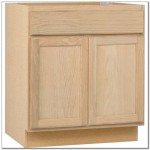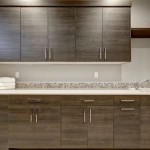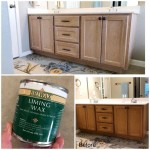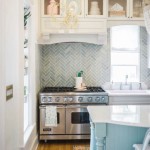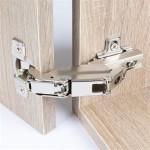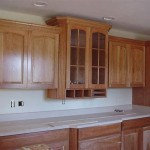Is Chalk Painting Kitchen Cabinets A Good Idea?
Chalk painting kitchen cabinets has gained considerable popularity among homeowners seeking a cost-effective and relatively straightforward method for updating their kitchens. This technique involves applying chalk paint, a decorative paint known for its matte finish and excellent adhesion, directly onto cabinet surfaces. While the perceived ease and aesthetic appeal of chalk painting are undeniable, a careful evaluation of its benefits, drawbacks, and necessary preparation is crucial to determine if it aligns with specific needs and expectations.
The allure of chalk paint lies in its reputation for minimal surface preparation. Unlike traditional paints, which often require extensive sanding and priming to ensure proper adhesion, chalk paint boasts the ability to adhere to a variety of surfaces, including wood, laminate, and even metal, with minimal prep work. This inherent characteristic significantly reduces the time and effort associated with cabinet refinishing, making it an appealing option for DIY enthusiasts and budget-conscious homeowners. Furthermore, chalk paint's matte finish provides a vintage or rustic aesthetic, a stylistic preference that resonates with many individuals.
However, the seemingly effortless application and appealing finish mask several critical considerations. Durability, maintenance, and the overall long-term viability of chalk-painted cabinets are factors that must be thoroughly investigated before embarking on such a project. The unique properties of chalk paint, while advantageous in some respects, also present certain challenges that can impact the longevity and aesthetic appeal of the finished product. Without proper application and sealing, chalk-painted cabinets can be susceptible to chipping, staining, and water damage, negating the perceived cost savings and ease of application.
Advantages of Chalk Painting Kitchen Cabinets
One of the most significant advantages of chalk painting kitchen cabinets is the reduced preparation time. Traditional painting often involves extensive sanding to create a suitable surface for primer and paint. Chalk paint, however, generally requires only a thorough cleaning to remove grease, grime, and loose debris. This simplified preparation process significantly reduces the overall project time and physical effort, making it a more accessible option for DIY enthusiasts with limited experience or physical limitations. In some cases, light sanding may still be recommended to smooth out rough surfaces or remove existing glossy finishes, but the extent of sanding is typically far less than what is required for traditional paint.
Another appealing aspect of chalk paint is its versatility in style and finish. The matte finish lends itself well to creating vintage, farmhouse, or shabby chic aesthetics. Furthermore, chalk paint can be easily distressed, allowing homeowners to customize the look and feel of their cabinets by selectively removing paint to reveal the underlying surface. This distressing technique adds depth and character to the cabinets, creating a unique and personalized look. The availability of chalk paint in a wide range of colors also provides ample opportunities for customization and allows homeowners to match their cabinets to their existing décor.
Beyond its aesthetic versatility, chalk paint's ease of application contributes to its appeal. The paint's thick consistency makes it easy to apply with a brush or roller, and it tends to level well, minimizing brushstrokes and creating a smooth, even finish. This characteristic is particularly beneficial for less experienced painters who may struggle to achieve a flawless finish with traditional paint. The quick drying time of chalk paint also allows for multiple coats to be applied in a single day, further accelerating the project timeline.
Disadvantages of Chalk Painting Kitchen Cabinets
Despite its apparent advantages, chalk paint is not without its drawbacks. One of the primary concerns is its inherent lack of durability. Chalk paint is porous and easily susceptible to staining and damage from water and grease, common occurrences in a kitchen environment. Without proper sealing, spills and splatters can quickly penetrate the paint, leaving unsightly marks that are difficult to remove. This vulnerability requires the application of a sealant, such as wax or polyurethane, to protect the painted surface.
The choice of sealant also presents its own set of considerations. Wax, while providing a soft and natural finish, requires regular reapplication to maintain its protective properties. Polyurethane, on the other hand, offers greater durability and water resistance but can alter the matte finish of the chalk paint, making it appear more glossy. The application of polyurethane can also be challenging, as it can sometimes yellow over time or streak if not applied properly. Carefully choosing the appropriate sealant and mastering its application technique are essential to achieving a durable and aesthetically pleasing finish.
Furthermore, the perceived cost savings of chalk painting can be misleading. While chalk paint itself may be relatively affordable, the cost of necessary supplies, such as brushes, rollers, sandpaper, and sealant, can quickly add up. In addition, the time and effort required to properly prepare the surface, apply multiple coats of paint, and seal the cabinets should not be underestimated. For individuals with limited time or experience, hiring a professional painter may ultimately be a more cost-effective and efficient solution.
Considerations for Successful Chalk Painting
To maximize the chances of a successful chalk painting project, several key considerations must be addressed. Thorough surface preparation is crucial, even though chalk paint is known for its adhesion properties. While extensive sanding may not be necessary, cleaning the cabinets thoroughly with a degreasing cleaner is essential to remove any grease, grime, or residue that could interfere with the paint's adhesion. Any loose paint or peeling surfaces should be scraped or sanded smooth before applying chalk paint.
The selection of appropriate tools and materials is equally important. High-quality brushes and rollers will ensure a smooth and even application, minimizing brushstrokes and maximizing coverage. Choosing a chalk paint specifically designed for furniture or cabinets is also recommended, as these formulations are typically more durable and resistant to wear and tear. Selecting the right sealant is critical to protecting the painted surface from staining, water damage, and chipping.
Proper application techniques are essential for achieving a professional-looking finish. Applying thin, even coats of paint is crucial to prevent drips and runs. Allowing each coat to dry completely before applying the next coat will ensure proper adhesion and prevent the paint from peeling or cracking. Distressing the cabinets, if desired, should be done carefully and deliberately to create a natural and authentic look. Finally, applying the sealant according to the manufacturer's instructions is critical to maximizing its protective properties and achieving a durable and long-lasting finish.
In conclusion, while chalk painting kitchen cabinets offers a potentially cost-effective and aesthetically pleasing way to update a kitchen, it requires careful consideration and meticulous execution. The perceived ease of application should not overshadow the importance of proper preparation, material selection, and application techniques. By carefully weighing the advantages and disadvantages of chalk painting, and by diligently following best practices, homeowners can increase their chances of achieving a successful and long-lasting result.

Painting Kitchen Cabinets With Chalk Paint Simply Today Life

Chalk Painted Kitchen Cabinets 2 Years Later Our Storied Home

Chalk Painted Kitchen Cabinets 2 Years Later Our Storied Home

Why I Repainted My Chalk Painted Cabinets Sincerely Sara D Home Decor Diy Projects

Chalk Paint Kitchen Cabinets 2 Amazing Before Afters And How To The Interiors Addict

Why I Repainted My Chalk Painted Cabinets Sincerely Sara D Home Decor Diy Projects

How To Paint A Kitchen With Chalk Maison De Pax

Painting Kitchen Cabinets With Chalk Paint Simply Today Life

Why I Repainted My Chalk Painted Cabinets Sincerely Sara D Home Decor Diy Projects

My Chalk Painted Cabinets 4 Years Later How Did They Do Artsy Rule
Related Posts

